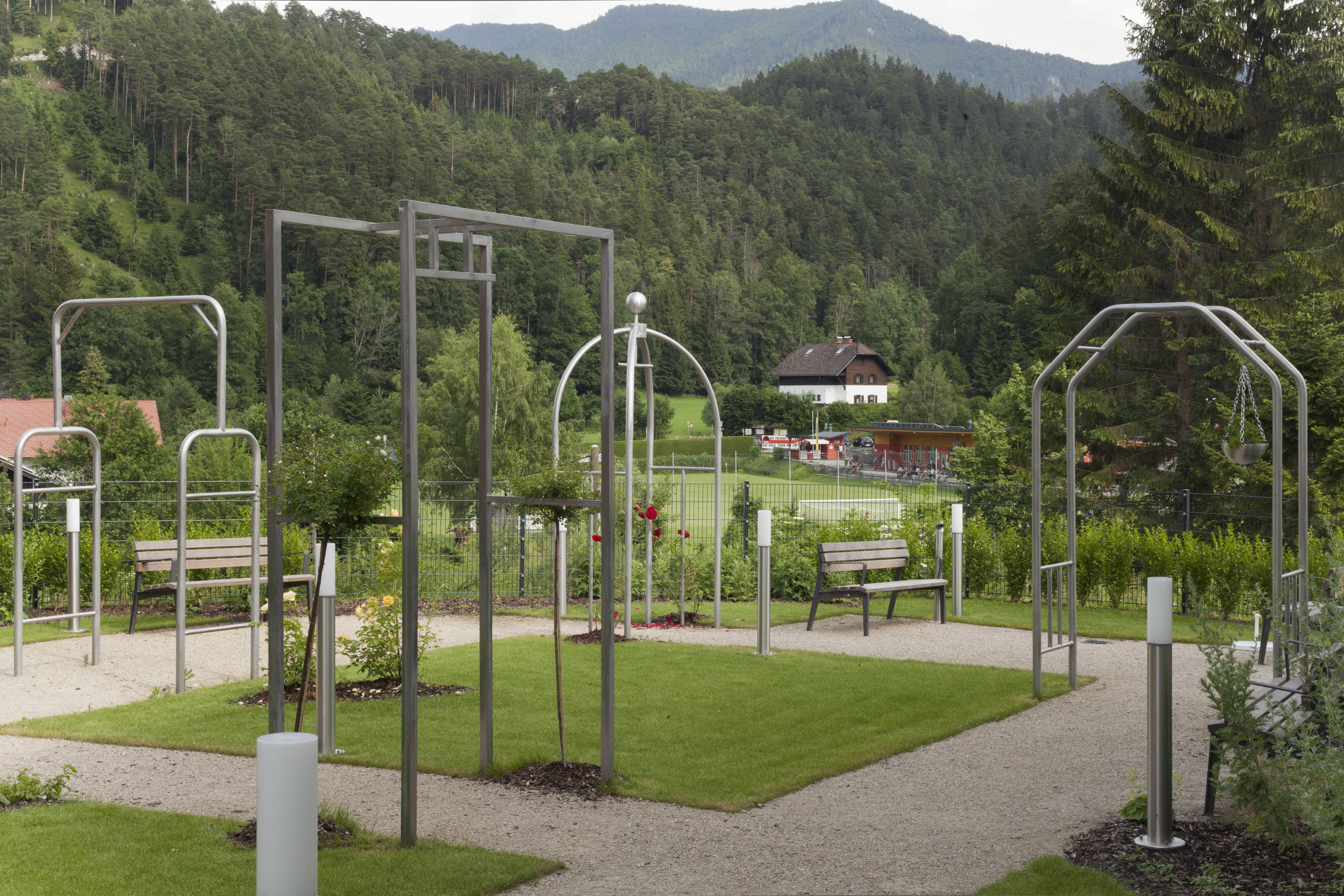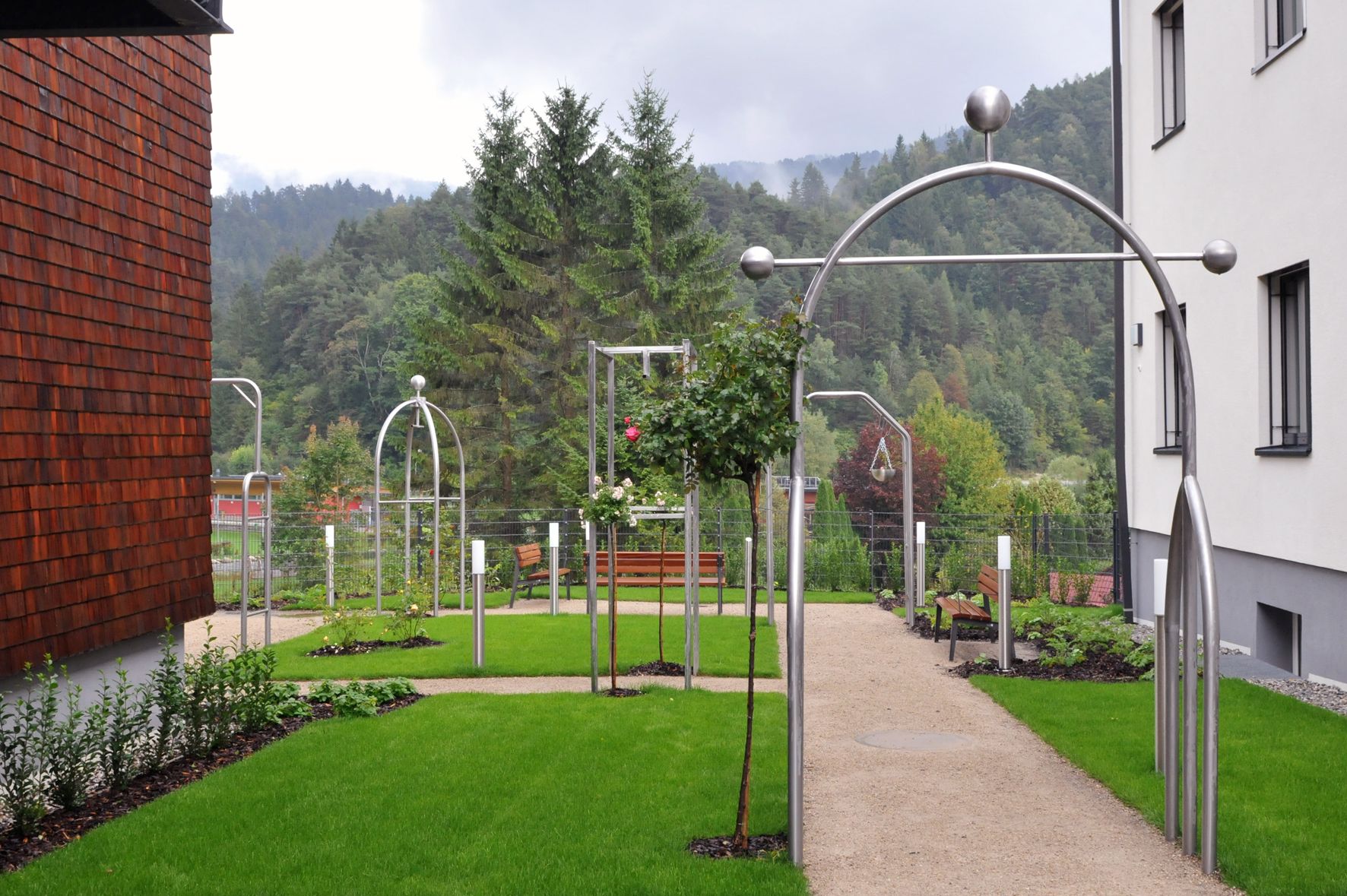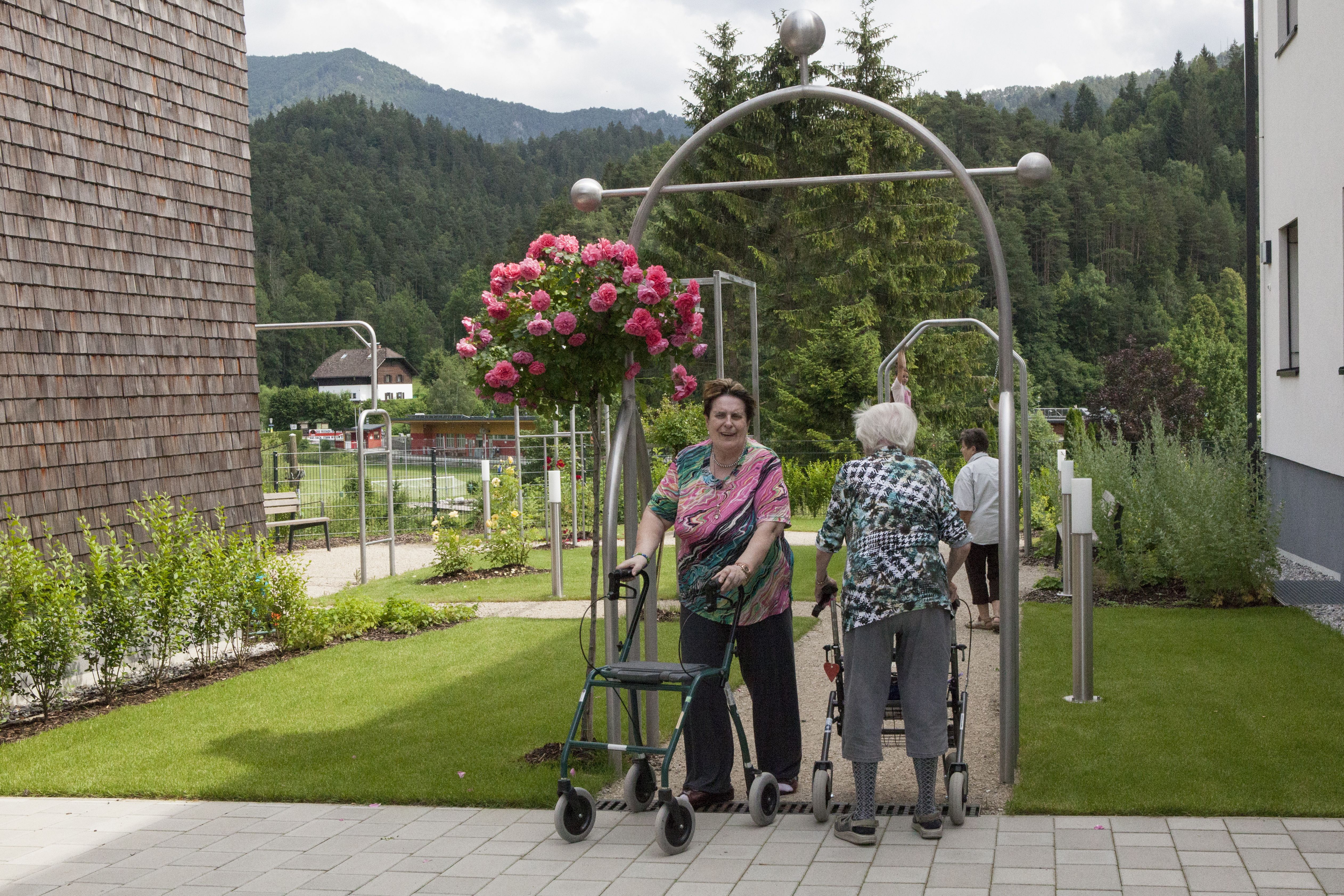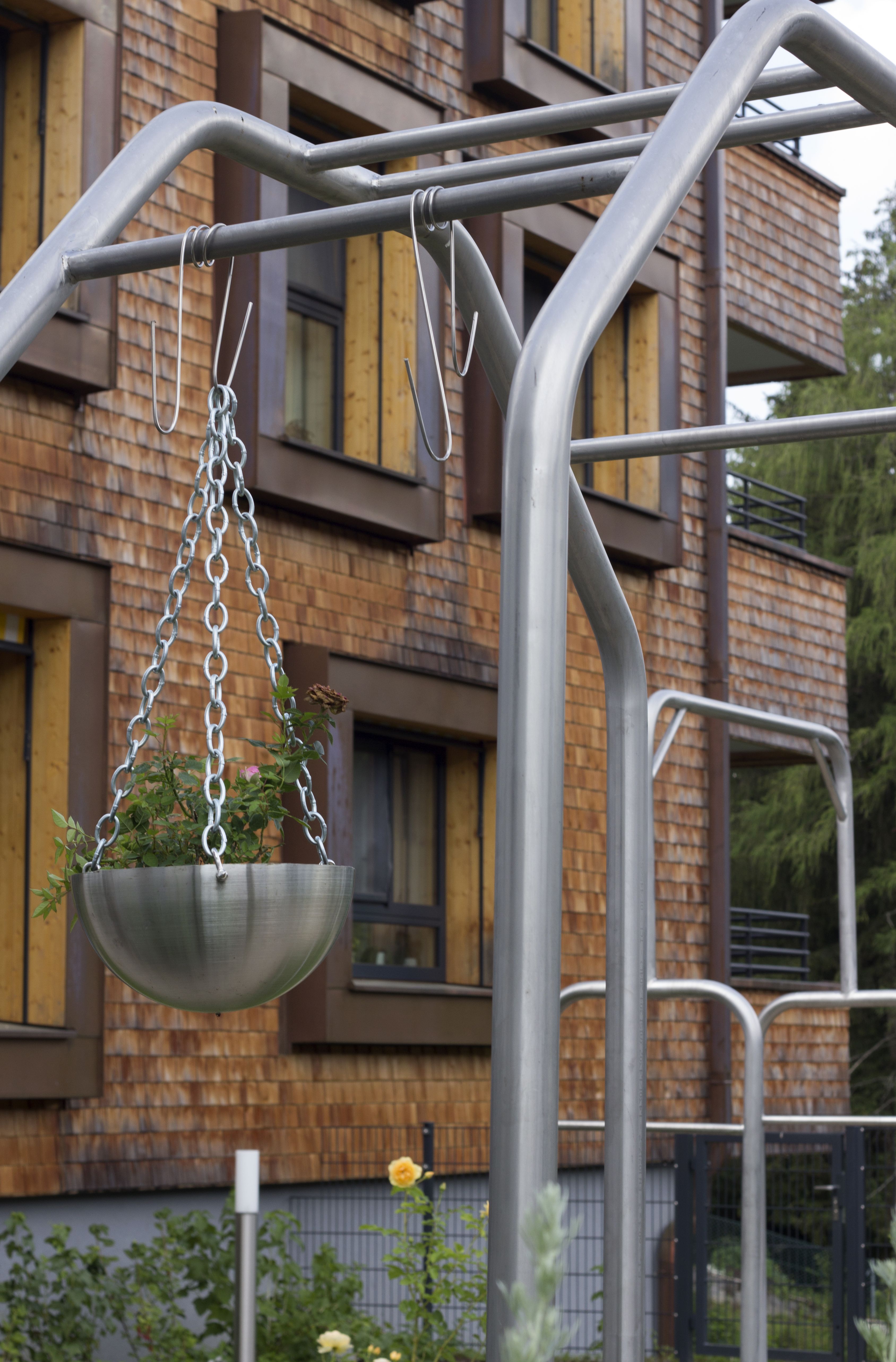Lazar Lyutakov
:
Rosae
Back
Information
The annex building of the Lower Austrian state nursing home and assisted living center in Türnitz, which was finished at the end of 2016, stands out from the usual sober architecture of nursing homes thanks to the high quality and aesthetically pleasing design of the exterior wall cladding with durable larch wood shingles. The irregularly placed large windows with sheet copper frames lend the building a sculptural appearance. The materials are meant to “age with dignity,” according to the architect. Apparently inspired by this approach, Lazar Lyutakov created a complex installation for the garden of the nursing home. This consists of five stainless steel objects that arch over the paths, while serving as trellises for roses. While they may function as rose arches, they do not look like classical trellises. Instead, Lyutakov modelled them on luggage trolleys like the ones we know from large hotels. Each arch refers to a different model, and through their formal references and obvious functionality, they are ideally suited for evoking different associations and mental images. Regardless of whether they make us think of vacations or luxurious holidays, or things like sports equipment (walkers have also been mentioned), or whether we only see their function or regard them as minimalist sculptures, these associations reflect our world of thoughts – a space Lyutakov helps to create through the openness of possible interpretations, allowing us to revel in self-reflection.
Lyutakov is a passionate observer of people and their relationship to things. In his ready-mades and installations, he explores the notions of function, form and norm, value, materiality, as well as the immaterial meaning of objects. For his project for the nursing home in Türnitz, he developed a scenario that addresses both the functional and the aesthetic needs of the residents, while also referring to the key themes of his artistic work. The artist’s design for the garden is an overall composition based on the interplay between free and geometric forms, and the paths and plants that were chosen together with the landscape architect Milena Georgieva are as important as the individual sculptures. Depending on our perspective, looking through the arches and paths creates various, sometimes overlapping views. The space becomes a stage that opens up in different directions: Lyutakov regards his garden installation as a kind of choreography that is subject to changes in nature and is centered around the rose. Each sculpture represents a different kind of rose, reflecting certain criteria like growth and appearance. In this way, Lyutakov’s design is a sculptural scenario for each kind of rose: from tree roses to climbing roses.
In his artistic work, Lyutakov explores the world of objects with an almost anthropological eye. His objects take the form of long-term reflections on society’s economic, functional, and aesthetic values, as well as the conditions of work and production processes. He often uses ready-mades and everyday articles, which he combines with various elements to create artistic artifacts. “Between the lines,” “rabbit-duck illusions” emerge that surpass the aesthetic message of the sculptures to represent the difference between everyday articles and artworks as cult objects, thereby. Not only does Lyutakov analyze everyday life; he also creates poetic counter-worlds through his fundamental negation of use value and the functional redefinition of objects.
Lyutakov thus subtly and ironically plays with William Shakespeare’s saying “All the world’s a stage” by letting his installations appear like stage sets with elements from everyday life. As such, they make us realize that what we take to be reality is always a construction thereof; it is a game, or a stand-in for reality. There is an aura of humor around the objects that contributes to identity formation in this game – an aura that reflects not only people, but their touching relationship to the material world, their magical attraction to the aesthetics of commodities and design, and their behavior connected to this. This may be the reason why Lyutakov’s engagement with objects resembles a large-scale series of experiments through which he hopes to gain an understanding of the essence of humanity. What is certain is that Lyutakov always keeps one eye on the bigger picture in all his works, including these sculptures camouflaged as rose arches and/or luggage trolleys in hotels. After all, “We are all only guests,” says the artist.






